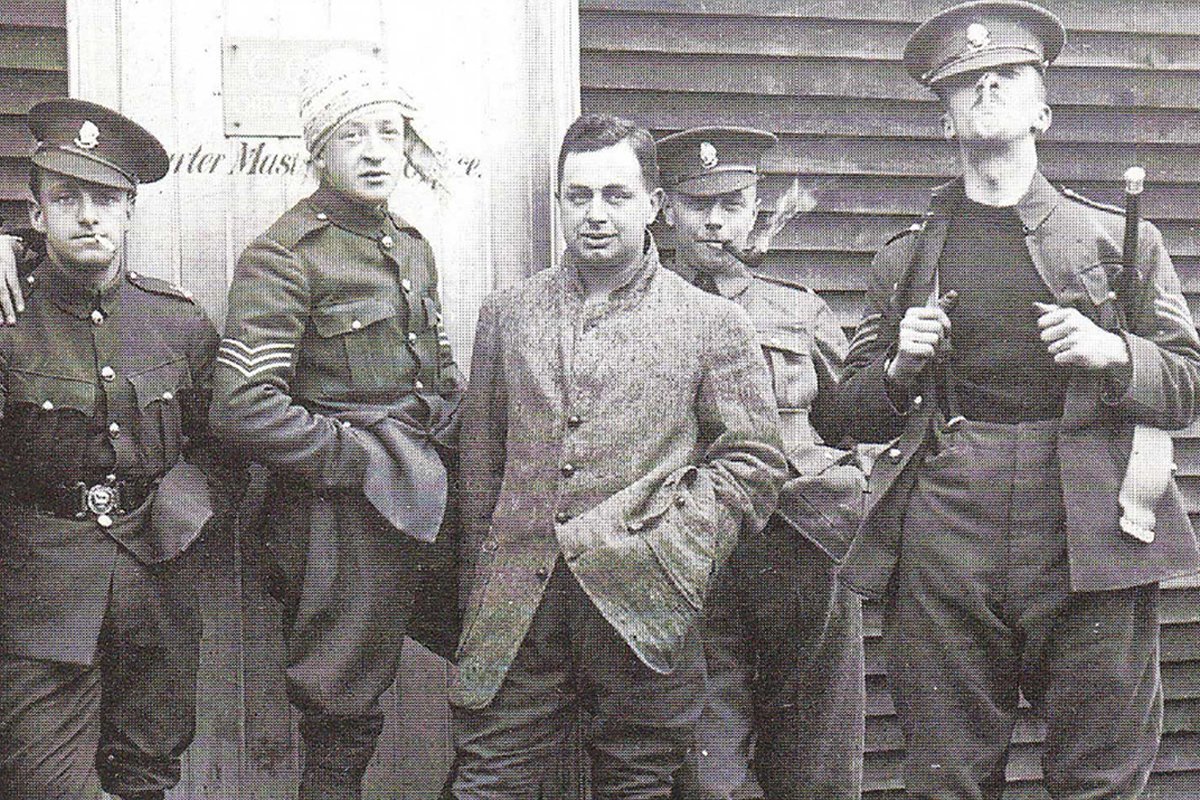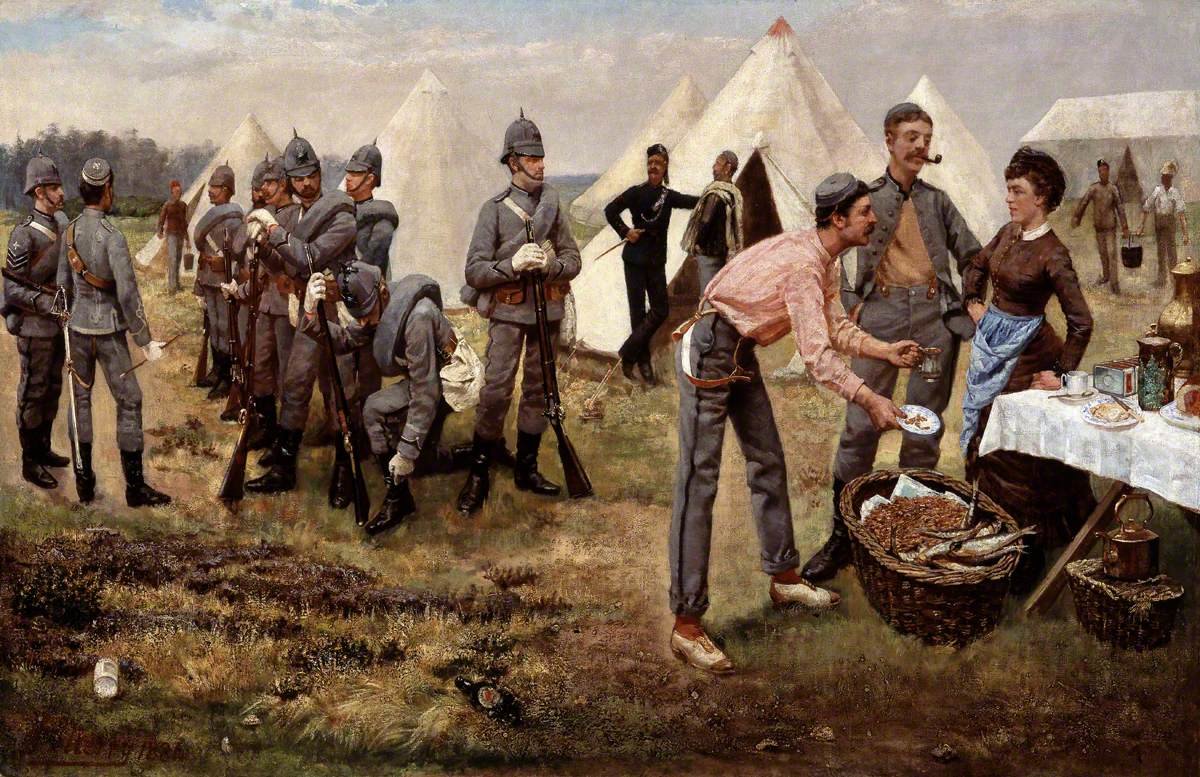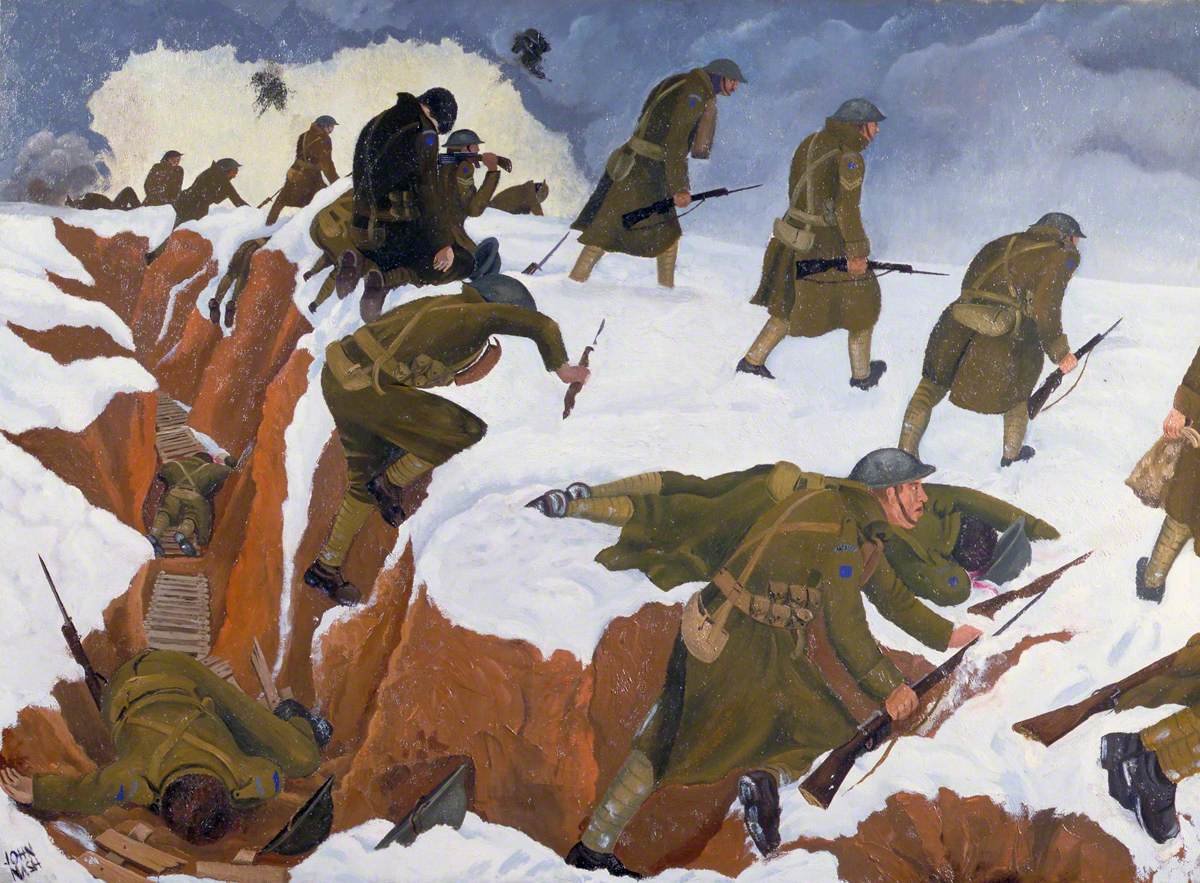
The Artists Rifles were perhaps the most curious regiment in the British army. Its soldiers were a hardy group of painters, architects, poets, sculptors, musicians, and actors, and the regiment was originally formed by artists concerned about a possible French invasion. Photo courtesy of the National Army Museum.
The British Special Air Service, or SAS, is among the most elite and revered special operations units in the world. In the service’s storied history of global military operations, one very selective special unit known as the Artists Rifles rose through the ranks and performed some singular missions.
Ben Garwood, former SAS trooper of more than 11 years and the owner of HR4K, told the Late Night History podcast the Artists Rifles were made up of actual artists and painters.
Formed in London in 1859 and raised in 1860, the all-volunteer regiment comprised professionally-trained painters, musicians, actors, architects, and other creative artisans under the command of a talented leader named Edward Starling.
Starling, only an art student upon the unit’s inception, feared the possibility of a French invasion and recruited the finest talent the United Kingdom had to offer. Early recruits included William Morris, celebrated as the 19th-century’s most outstanding designer; Charles Edward Perugini, a notable Victorian-era painter; and even members of the Pre-Raphaelite Brotherhood of artists who were so upset with traditional academic artwork that they revolutionized the realistic depiction of their subjects.

The regiment’s first blood came during the Boer Wars, which lasted from 1899 to 1902.
In 1908, the Artists Rifles reorganized as the 28th (County of London) Battalion. Despite the name change, the regiment maintained its identity, swagger, and battlefield creativity. Its reputation attracted additional recruits leading into World War I.
“The regiment was the natural choice for young men of an artistic persuasion at the outbreak of war in 1914,” according to the UK’s National Army Museum. “Artists like John and Paul Nash, the poets Edward Thomas and Wilfred Owen, and the playwright Noël Coward wore the uniform of the Artists Rifles.”
Inventors and other creators like Barnes Wallis entered this exclusive warfighting fraternity. Wallis later famously invented the “Dambuster bombs,” which the Royal Air Force skipped across the water into Nazi dams during World War II.
The Artists Rifles were primarily an officer training unit and helped train more than 10,000 officers for combat in World War I. But because the members’ style was to lead alongside their trainees, often from the front, the regiment acquired one of the highest casualty rates of any regiment.

Survivors from the Artists Rifles revealed their experiences in haunting, realistic paintings, poetry, and other art forms following the war.
Among the 15,022 soldiers to serve in the regiment in World War I, 2,003 were killed, 3,250 were wounded, 533 were declared missing in action, and 286 became prisoners of war. The unit’s reputation inspired 564 dispatches, which spread the news of the soldiers’ heroism.
The Artists Rifles garnered more than 1,000 individual gallantry awards, including eight Victoria Cross Medals, the British equivalent to the Medal of Honor.
In fact, one of the regiment’s soldiers designed the World War I and British Victory medals.
After the war, the Artists Rifles disbanded. During World War II in 1941, the British SAS was formed. When the SAS planned an expansion, the Artists Rifles were reestablished in 1947 as the 21st SAS Regiment (Artists Rifles).
Read Next:

Matt Fratus is a history staff writer for Coffee or Die. He prides himself on uncovering the most fascinating tales of history by sharing them through any means of engaging storytelling. He writes for his micro-blog @LateNightHistory on Instagram, where he shares the story behind the image. He is also the host of the Late Night History podcast. When not writing about history, Matt enjoys volunteering for One More Wave and rooting for Boston sports teams.
BRCC and Bad Moon Print Press team up for an exclusive, limited-edition T-shirt design!
BRCC partners with Team Room Design for an exclusive T-shirt release!
Thirty Seconds Out has partnered with BRCC for an exclusive shirt design invoking the God of Winter.
Lucas O'Hara of Grizzly Forge has teamed up with BRCC for a badass, exclusive Shirt Club T-shirt design featuring his most popular knife and tiomahawk.
Coffee or Die sits down with one of the graphic designers behind Black Rifle Coffee's signature look and vibe.
Biden will award the Medal of Honor to a Vietnam War Army helicopter pilot who risked his life to save a reconnaissance team from almost certain death.
Ever wonder how much Jack Mandaville would f*ck sh*t up if he went back in time? The American Revolution didn't even see him coming.
A nearly 200-year-old West Point time capsule that at first appeared to yield little more than dust contains hidden treasure, the US Military Academy said.












